Parisian Walkways: Rue Charlot in the Marais District

As much of the Marais succumbs to the onslaught of international chains and brands, JeffreyT Iverson meets the entrepreneurs of one street that is defying the trend…
Ever since 1962, when the historic Marais district of Paris was saved from destruction by the Malraux heritage preservation laws that protected its streets and buildings and enabled its renaissance, the neighbourhood of the 3rd and 4th arrondissements has earned a reputation as a bastion of creative industry where the city’s art lovers, epicureans and fashionistas could always come to satisfy their appetite for the dernier cri.
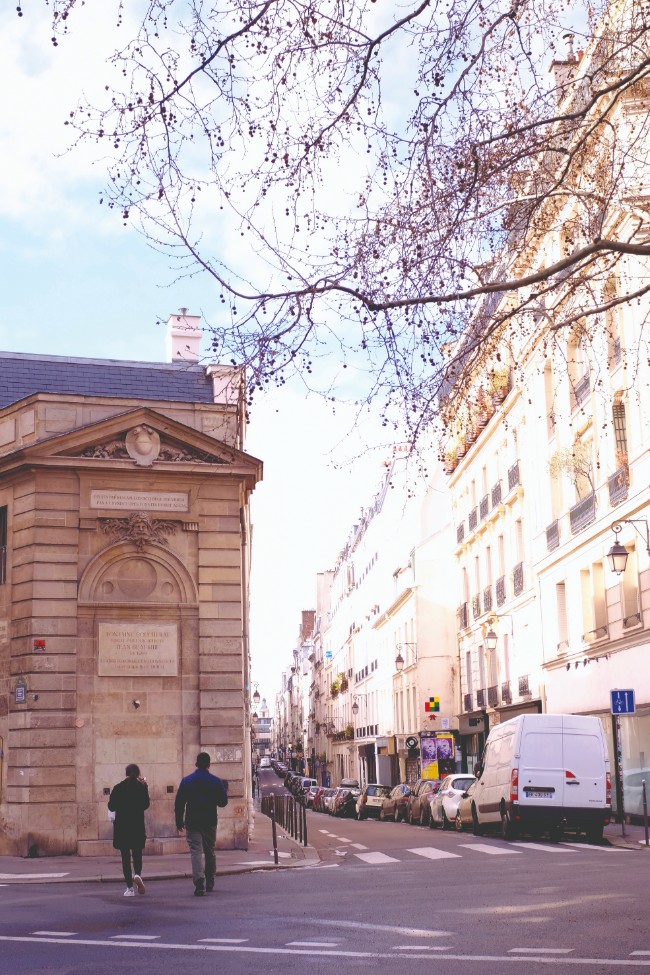
The landmark of the fontaine Boucherat marks the top of rue Charlot. Photo: Jeffrey T Iverson
But the Marais became a victim of its own success when property prices and rents skyrocketed and the neighbourhood became inaccessible to the young creative types who originally fuelled its revival. Today, nevertheless, while multinational brands and haute- couture houses continue to move into the southern Marais, a number of entrepreneurs and artisans in its upper reaches have been working hard to preserve the artisanal traditions and collaborative spirit that have reigned here for centuries. And nowhere is that spirit more palpable than on the ten-metre-wide rue Charlot.
“From one end of the street to the other, in every shop on rue Charlot you will find the creations of artisans; it’s a street that was entirely developed by crafts people, artists, fashion designers and the like,” says Bruno Tessier, who runs the delicatessen Maison Barthouil at 41 rue Charlot.
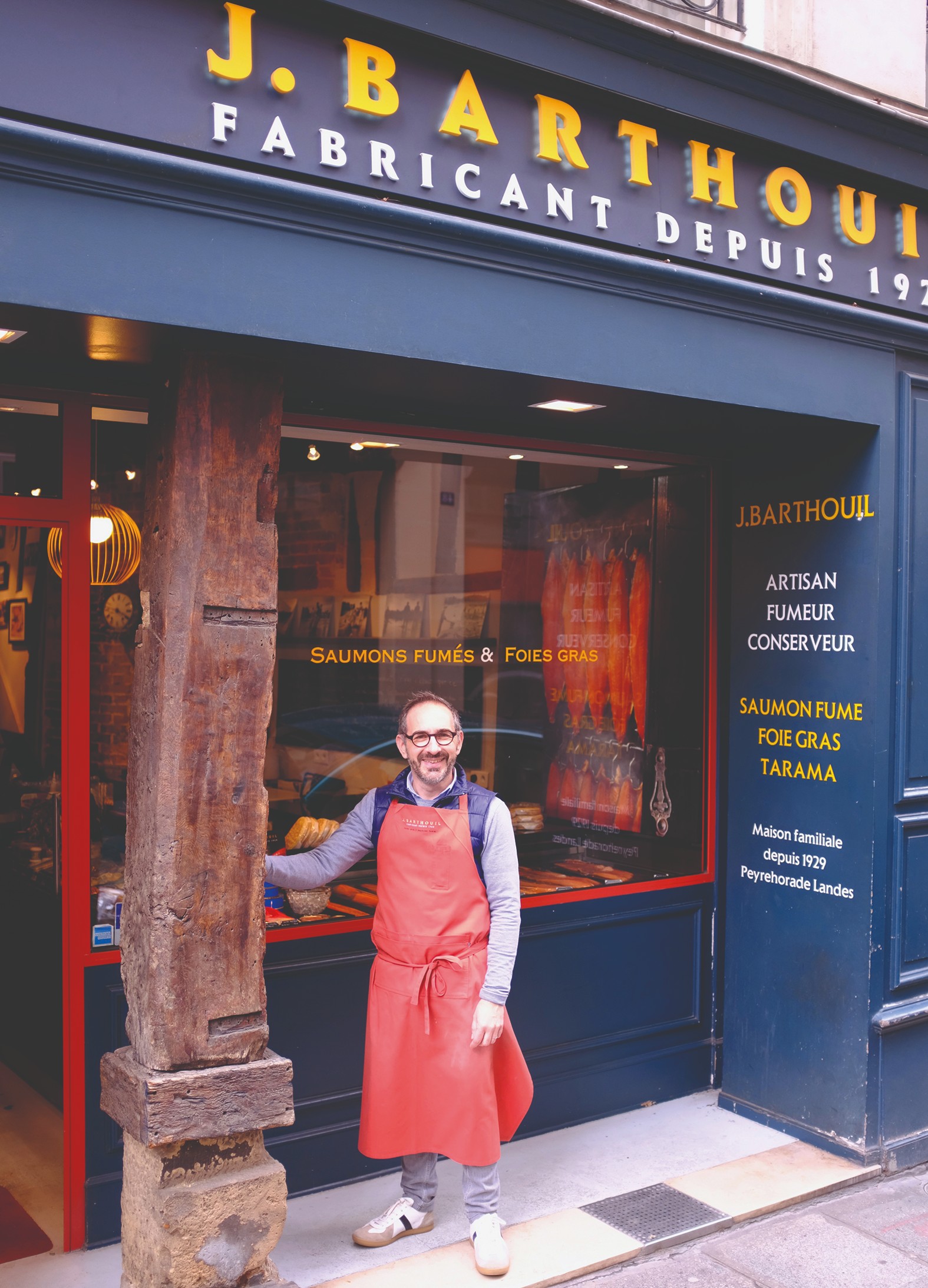
Maison Barthouil. Photo: Jeffrey T Iverson
“And without doubt, this narrow little street, despite being so inconvenient for the circulation of cars– or even people sometimes– is on the rise today. Yet people don’t come here just because it’s trendy; they come for the quality of the products they find – and the quality of the welcome they receive. In a busy city like Paris, people need that: to have genuine, human exchanges in their lives.”
Perhaps it’s the relaxed market atmosphere spilling onto the street from the colourful Marché des Enfants Rouges, or perhaps it’s the narrowness of the street and its petites boutiques, which creates a kind of natural intimacy, but rue Charlot is a street of shopkeepers with stories to tell, and a clientele that finds the time to slow down and listen.
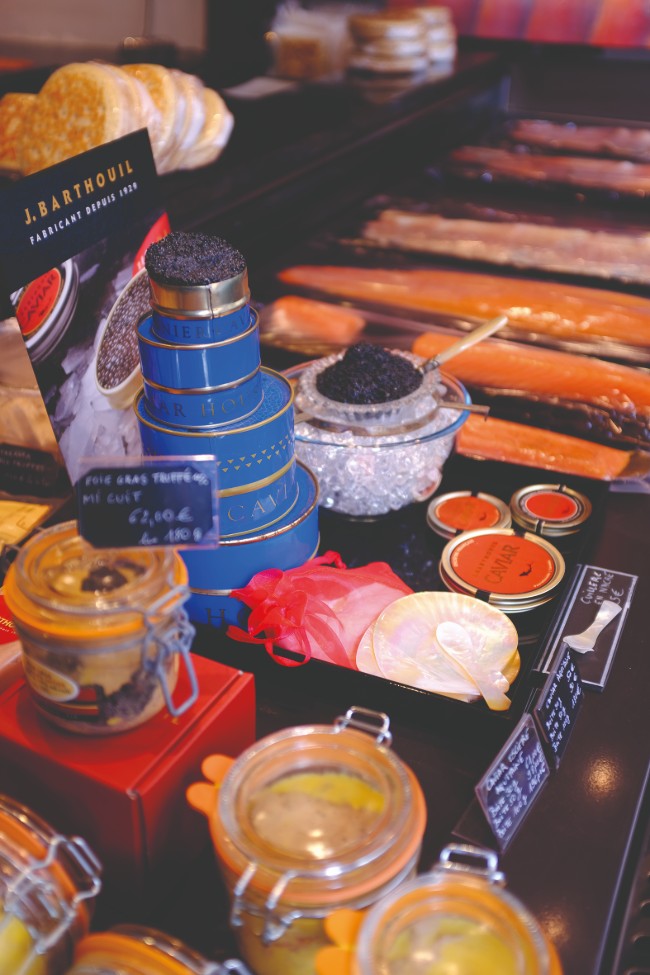
Maison Barthouil brings the tastes of the southwest to Paris via its boutique here on rue Charlot. Photo: Jeffrey T Iverson
Take Marilyn Feltz and Alexis Gaffuri, who set up shop at 28 rue Charlot. A little over a year ago, this husband and wife team was at a crossroads: the lease at their boutique in the 2nd arrondissement was expiring and they needed a new locale. They were interested in the Marais, but the more heavily commercial areas down near rue de Rivoli seemed an unnatural setting for the eminently personal Parisian prêt-à-porter brand they’d founded in 2014 – Marilyn Feltz, a label inspired by the couple’s lifelong passion for dressing up and spending soirées in colourful musical settings; be it a Berlin jazz club, a Belleville guinguette or a Hollywood tiki bar.
“Everything in our boutique has a story behind it that we can tell, because they’re our stories,” says Alexis. “And I think that’s what’s been lost today in the world of ready-to-wear. When you buy a piece of clothing nowadays, so often there is no story behind it; it’s just a product that in six months will have become devalued, unfashionable and disposable. In our own small way, we’re trying to fight that, or at least propose a different, more lasting idea of fashion.”
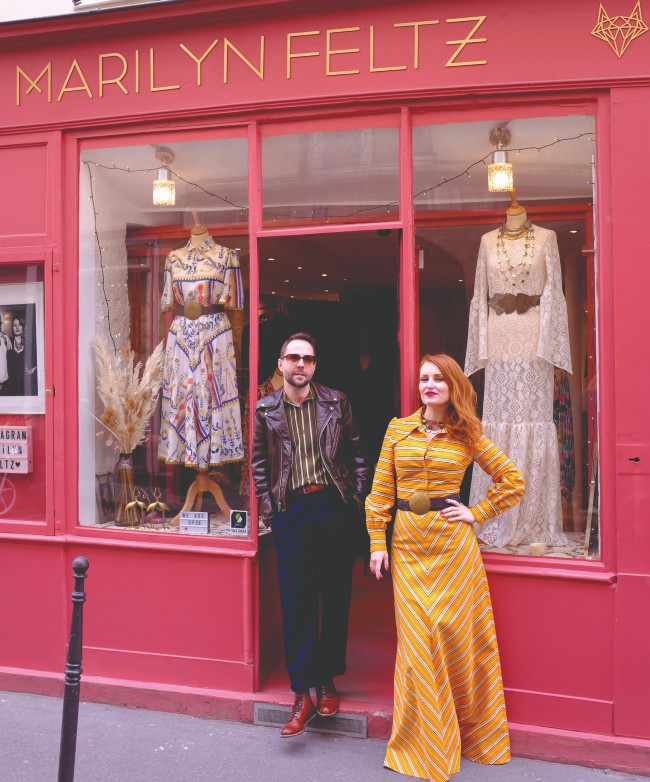
Marilyn Feltz. Photo: Jeffrey T Iverson
Alexis and Marilyn were searching for a setting where they would feel comfortable sharing the inspirations behind their creations and the provenance of their exquisite fabrics – mohair from Angora goats raised in the Pyrénées, silk that is woven by a multi-generational company outside of Lyon, guipure lace from Alexis’s native Cambrai in northern France…
“We wanted a place that resembles us, a place that’s warm, welcoming and authentic – and of course very Parisian!” recalls Marilyn. “We felt all of that when we first saw this boutique on rue Charlot, next to a beautiful 17th-century hôtel particulier.”
Their new address had the advantage of being within walking distance of the brand’s Paris workshop, where the entire collection is sewn by hand. And Marilyn and Alexis aren’t the only entrepreneurs selling Made in France on the street…
“Here, we discovered a place that is very bohème, very experimental, a place where behind each boutique and workshop is a unique personality, a unique talent,” says Marilyn. “You find fresh new clothing designers, artisan jewellery makers – even a shoemaker… These small boutiques de caractère really define this place, and I think that’s what draws people here. People come to rue Charlot to be surprised, to discover things that they know they won’t be able to find anywhere else, and to take something back home that specifically came from the Marais.”
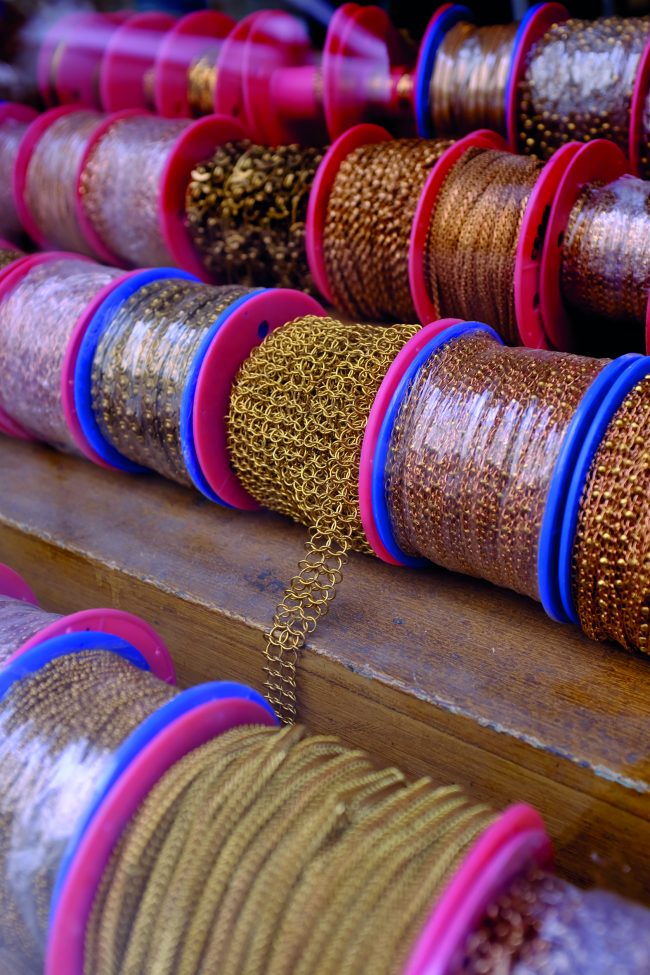
La Société des Chaînes du Marais has been selling its range of decorative chains since 1868. Photo: Jeffrey T Iverson
In fact, rue Charlot has been producing ‘Made in Marais’ for generations. It all began with the neighbourhood’s construction in the 17th century, after the creation of place des Vosges in 1612 set off an aristocratic development boom in the Marais.
Financier Claude Charlot was one of those to profit from this development, building lavish townhouses– hôtels particuliers – from around the 1620s, notably on lands that had once been occupied by the Knights Templar. During this period the now famous Marché des Enfants Rouges food market was created on the corner of rue de Bretagne and rue Charlot (a name that didn’t exist until 1851, when three contiguous streets were renamed in honour of the developer).
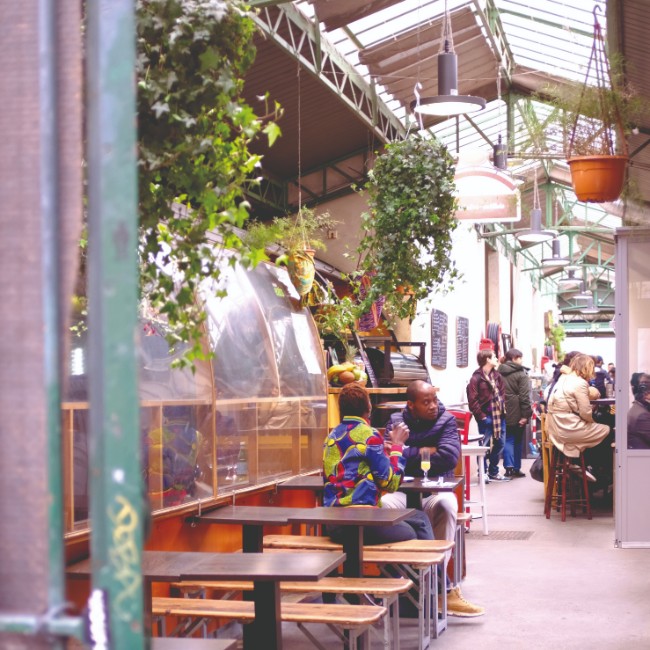
The famous Marché des Enfants Rouges. Photo: Jeffrey T Iverson
WAVES OF IMMIGRANTS
By that time, the aristocrats and bourgeois who had resided on rue Charlot until the Revolution were long gone and others had moved in. In the 19th century, the courtyards, gardens and drawing rooms of these hôtels particuliers were taken over by manufacturers, workshops and artisans of all stripes. Waves of immigrants, including Jews from eastern Europe, were welcomed into the Marais over time, and some of these introduced the commerce of jewellery and precious metals to the neighbourhood.
In recent years, many rue Charlot manufacturers have closed or sought less costly spaces in the suburbs, opening these hôtels particuliers to new residents once again, most often as art galleries and fashion showrooms. Yet numerous examples of rue Charlot’s artisan history also endure. Peek into the cobblestone courtyard next to Marilyn Feltz’s boutique at 28 rue Charlot today and you’ll see the sign for Établissements Richard, a historic manufacturer specialising in canvas creations, from tents to store awnings.
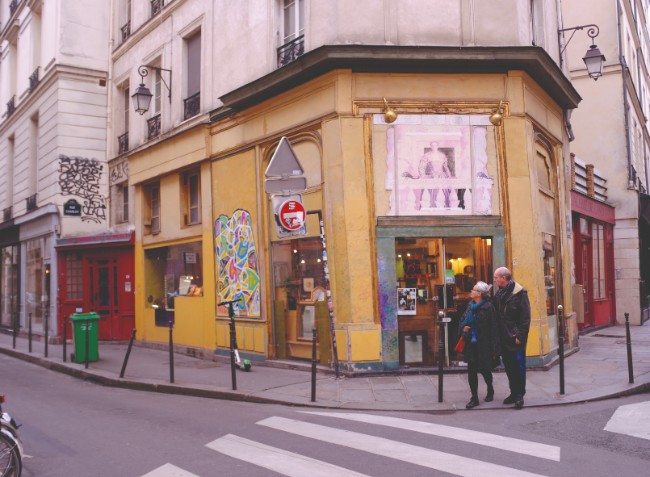
The intersection of rue Charlot with rue de Poitiers. Photo: Jeffrey T Iverson
Richard even created a small boutique, L’Échoppe à Sac, dedicated to canvas handbags in a kaleidoscope of colours. At No. 20, a manufacturer of decorative chains founded in 1868 still displays hundreds of rolls of their gold, silver and bronze creations. Next door, at No. 24, Manigor, another business founded more than a century ago, offers dorure et argenture pour l’orfèvrerie (gold and silver plating for jewellery).
In many ways, it’s thanks to the continued presence of such businesses through the generations that new waves of artisans have chosen to settle on rue Charlot. Jewellery designers, such as the founders of Parts of Four at No. 36, Jonas Bowman at No. 77 and Monsieur at No. 53, have all chosen rue Charlot in order to benefit from the synergy created by a neighbourhood dedicated to artisan trades.
“Because rue Charlot is at the heart of what was the original quartier des bijoutiers, even today, all the materials, metals, stones we need are available here,” says Coralie Chevallard of Monsieur, a jewellery-making workshop and boutique founded by designer Nadia Azoug ten years ago. “Everything we need is available within 500 metres of the boutique.”
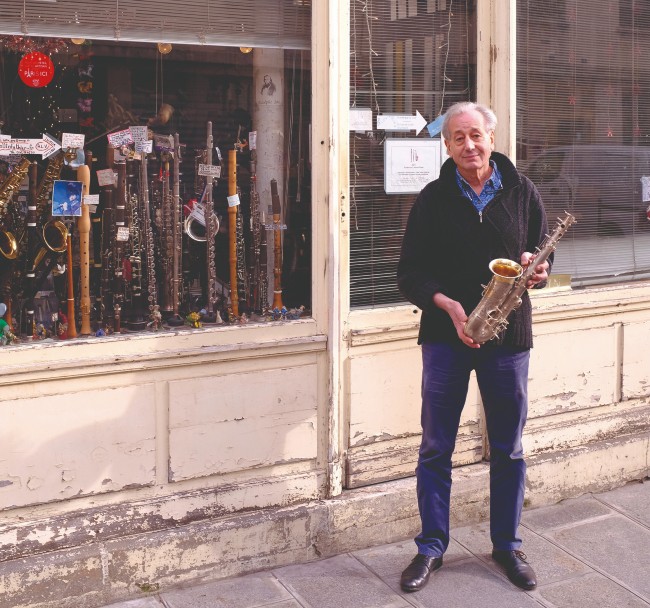
Ateliers de Lutherie Vents-Bois. Photo: Jeffrey T Iverson
Over the years, this same network of specialists and suppliers has benefitted artisans of other trades too. Just over 30 years ago it enticed Guy Collin, one of Europe’s most renowned experts in woodwind instruments, to open his workshop, Ateliers de Lutherie Vents-Bois, at 6 rue Charlot. “When I first arrived here there were no chic restaurants; it was simply the neighbourhood of artisans,” recalls Collin. “Here I could be close to my suppliers for precious metals, gold and silver, and to experts in polishing and precision machinery.”
Collin first earned his reputation working in Copenhagen alongside many of the greatest jazz musicians of the 20th century. “I’m like an instrument doctor or surgeon, and musicians come to me with their emergencies,” he says. “When I lived in Copenhagen, Dexter Gordon would always call me when he had a problem, and I’d hop on my bike and head over to the famous Jazzhus Montmartre to help him with his tenor.”
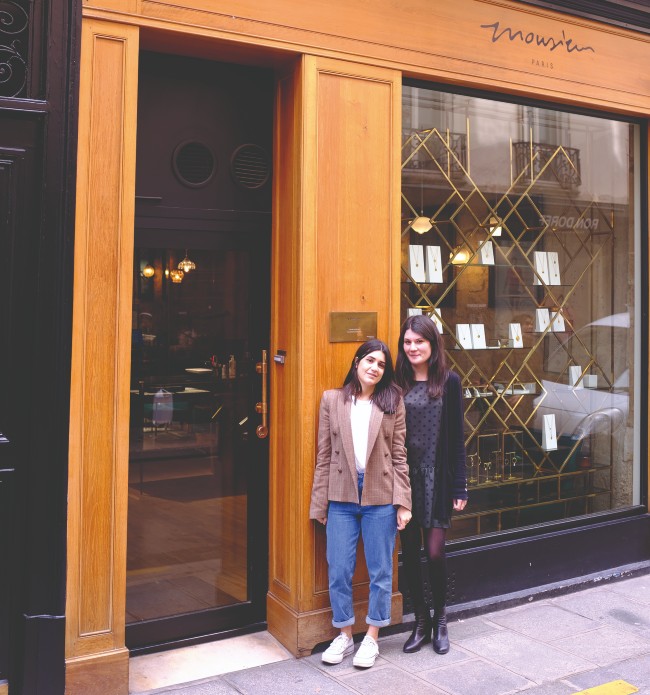
Monsieur, a jewellery shop on rue Charlot. Photo: Jeffrey T Iverson
Gordon, Stan Getz, Michael Brecker, Ben Webster… these are just a handful of the legends who entrusted Collin with their horns. Today, his passion for organology (the science, classification and history of musical instruments) has made him one of the world’s most sought-out restorers of rare and historic flutes and other woodwinds. Though he is always in high demand, Collin warmly welcomes visitors by appointment to his atelier, where he shows off his vast collection of impeccably-restored saxophones, clarinets and flutes for sale.
“If you devote yourself to the pursuit of excellence in your work, you will have to dedicate a great deal of time, and it won’t bring you much money,” says Collin. “However, the satisfaction you can enjoy from such work is without comparison.”
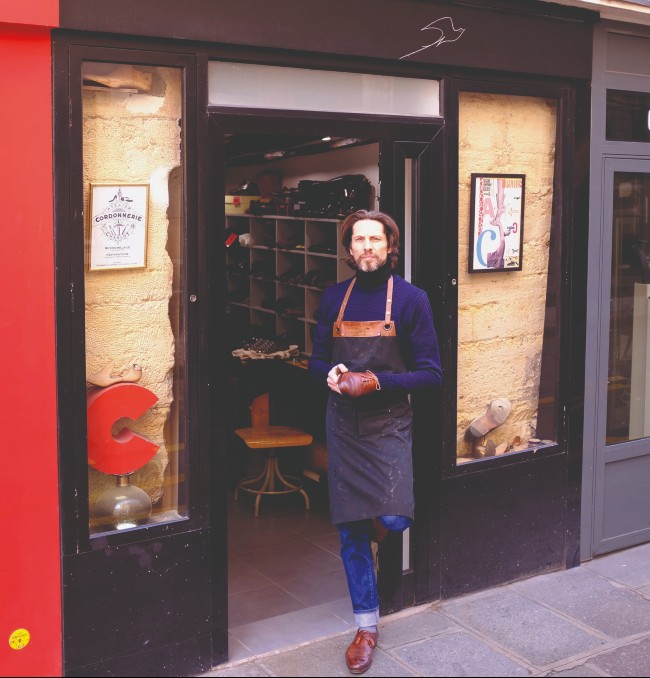
Atelier Charlot. Photo: Jeffrey T Iverson
Those same sentiments seem to be shared by many of rue Charlot’s artisans, including Matthieu Cuenot, who founded his tiny but exceptional cobbler shop Atelier Charlot in 2017. When he repairs the soles of your Gucci loafers, the leather comes back with such exquisite detailing, gold-paint accents and lacquered- wood-like-polish it’s almost a sin to walk in them. “I’m just obsessed with the quality of my work, with all the little details, I simply can’t work any other way,” he says. “I’d rather make my client wait twice as long if that’s what it takes to give them my best work, even if that sometimes makes it very hard to pay my rent! But that’s what makes me happy, and I love this street and it’s where I want to stay.”
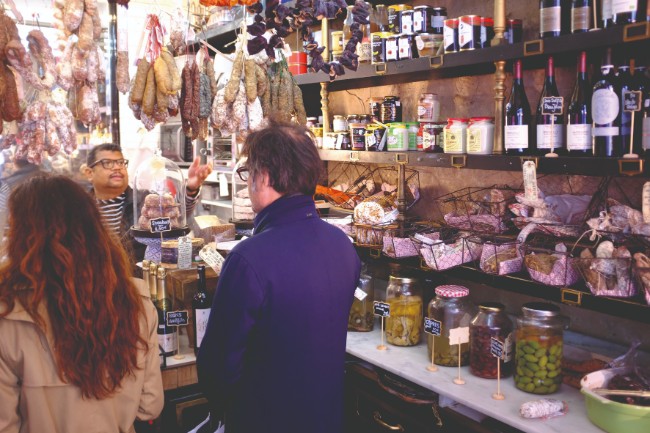
Shopping at Caractère de Cochon. Photo: Jeffrey T Iverson
One feels that same passion for quality from rue Charlot’s artisan food purveyors. Solo Ravel, founder of Caractère de Cochon at No. 42, speaks eruditely on the historical and geographical factors that led to Europe’s rich diversity of traditions in ham and charcuterie, while being a vocal advocate for humane farming practices and the preservation of heritage breeds.
Bruno Tessier credits similar commitments made by the family behind Maison Barthouil for the mouthwatering array of delicacies he’s able to offer today on rue Charlot. The Maison works exclusively with small-scale farms in southwestern France for their regional specialities, promotes the renaissance of their local heritage duck breed, and collaborates with France’s institute of agronomic research to set sustainable fishing limits and promote water quality for their wild smoked salmon.
“In our small way, we try to promote ways of eating and doing business that are better for our planet,” he says. “I think if we can still enjoy such rare delights from time to time in the years to come, it will be thanks to companies like ours. It’s like a little designer of handbags or dresses on rue Charlot that only produces in limited quantities, but with the kind of marvellous quality that makes you say, ‘Wow!’. That’s rue Charlot in the end: it’s a street that makes us dream.”
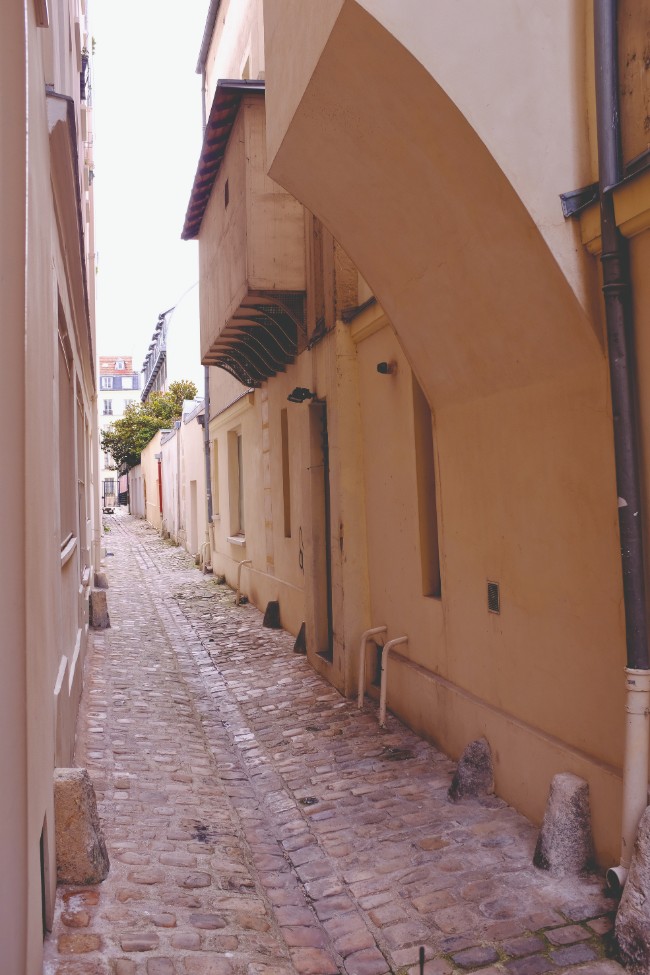
The ruelle Sourdis lies just off rue Charlot. Photo: Jeffrey T Iverson
BOUTIQUES
ATELIERS DE LUTHERIE VENTS-BOIS: 6 rue Charlot, Tel. +33 (0)1 42 78 46 30
For many of the great jazz and classical musicians of recent decades, there has only been one man they’d trust to service and restore their instruments. Guy Collin is an expert in the restoration of flutes and other woodwinds and also sells hand-picked modern and vintage saxophones, clarinets and flutes.
MARILYN FELTZ: 28 rue Charlot, Tel. +33 (0)1 40 26 39 48
Marilyn and husband Alexis entered the fashion world out of a passion for dressing in colourful clothing to match rich musical ambiences – from Berlin jazz clubs to Belleville guinguettes to tiki bars – and a belief that one could create affordable, luxe ready-to-wear without using dubious foreign factories. Sewn from Calais lace, Lyon silk and Pyrénées mohair, their line is 100% Made in Paris.
CARACTÈRE DE COCHON: 42 rue Charlot, Tel. +33 (0)1 42 74 79 45
If this tiny boutique dedicated to the pig is now on many a foodie’s list of favourite Paris addresses, it’s thanks to the passion and proficiency of its founder, Solo Ravel. His cave à jambon offers the most exceptional ham and charcuterie from small farms throughout Europe, all of which have been chosen by Ravel for their humane practices, heritage breeds and ancestral savoir-faire.
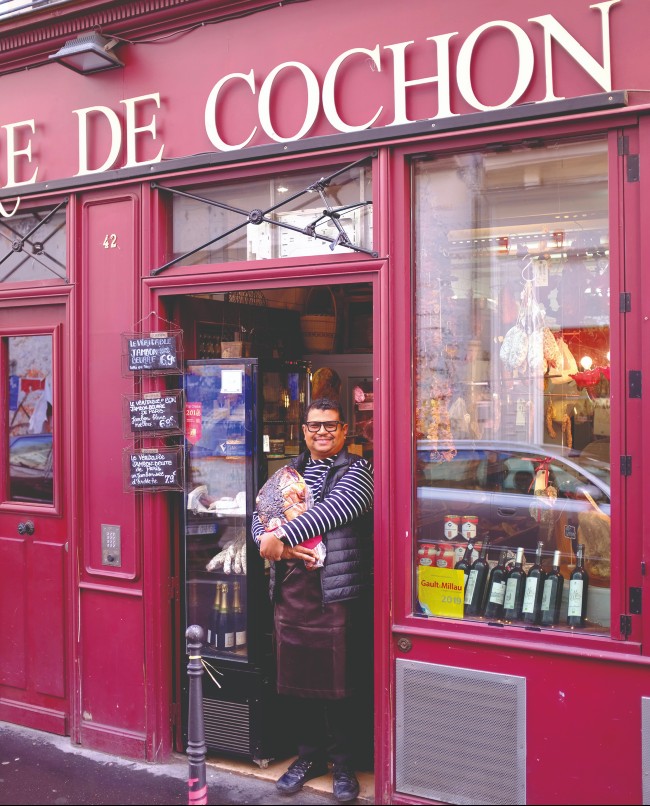
Caractère de Cochon. Photo: Jeffrey T Iverson
MAISON BARTHOUIL: 41 rue Charlot, Tel. +33 (0)1 42 78 32 88
For decades the Barthouil family of southwest France has been supplying top chefs with their region’s gastronomic delicacies, like smoked wild salmon from the Adour river, free-range duck foie gras from Landes country farms, and caviar from sturgeons raised in Aquitaine. Today, epicureans can take these delights home, thanks to Barthouil’s first boutique on rue Charlot.
MONSIEUR: 53 rue Charlot, Tel. +33 (0)1 42 71 12 65
Petite, warm and refined, if Monsieur isn’t quite like any other jewellery shop, that’s because it was created in the image of a singular woman: Nadia Azoug. This is an atelier-boutique whose creations reflect this cultivated Parisienne’s spirit, from her taste for Art Deco design to the imagery from her ancestors’ Berber culture, and where the sur-mesure service rivals that of the houses on place Vendôme.
ATELIER CHARLOT: 59 rue Charlot, Tel. +33 (0)6 61 82 55 39
Step inside Matthieu Cuenot’s shoebox-sized cordonnerie and it soon becomes clear that this is no typical cobbler’s shop. Just peek at the shoes awaiting his attention and you’ll doubtless spy creations by Gucci, Louboutin, Dior or Hermès. Cuenot is a master of his craft who uses the finest materials to restore to their original beauty the heels and eyelets of a demanding clientele.
From France Today magazine

Rue Charlot. Photo: Jeffrey T Iverson
Share to: Facebook Twitter LinkedIn Email
Leave a reply
Your email address will not be published. Required fields are marked *




REPLY